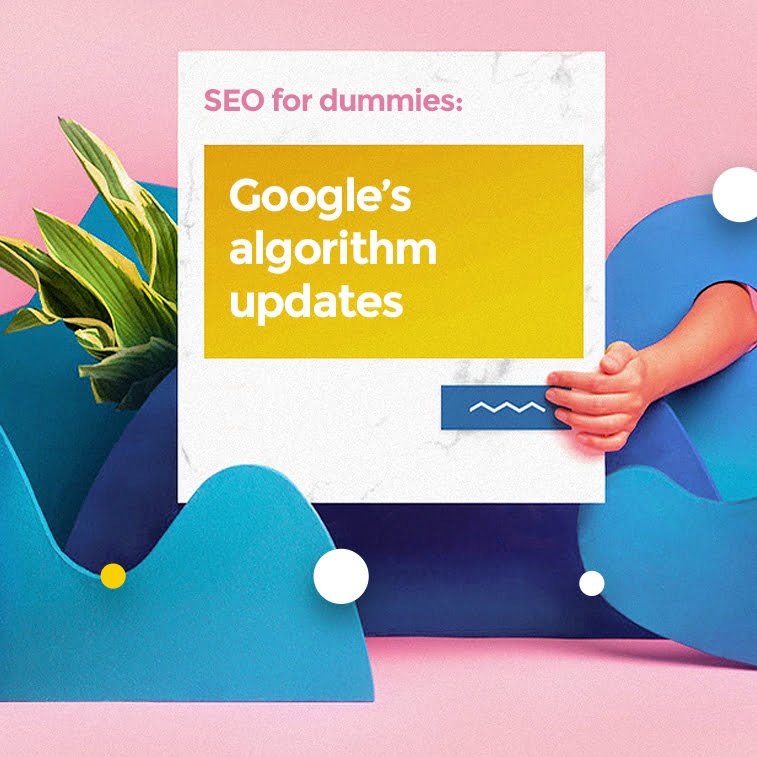All websites are not designed equal, and Google ranks them based on many parameters. In fact, the history of Google’s algorithm updates would be so long that it would not be able to fit in this one blog post. But we can go down in some pieces of it.
This is why we have decided to give all SEO beginners an overview of Google’s algorithm changes which made a huge impact on what we now usually take for granted – the search engine’s results page.
Mind you that we enlisted only updates which made the biggest impact and which occurred in the 2010s, but you can learn more about all of Google’s updates on Moz.
What is ’Google Update’?
’Google update’ is a term used for denoting all structural changes in Google’s ranking algorithm (search algorithm update). According to Gary Illyes, (small) changes occur on a daily basis – even three times a day. However, bigger algo adjustments that impact the ranking of many a site and uncover optimization weaknesses – happen periodically.
The first major event was creating an algorithm known as PageRank in 2000, which assessed website’s quality and trustworthiness.
PageRank is Google’s first algorithm (rolled out in 2000) which ranks websites according to their importance, namely the number and quality of backlinks. It was named after Larry Page, one of Google’s founders. Based on its parameters, websites which have many links should be ranked high in the SERP (search engine results page).
Even though this seems quite logical (but does it, really?), it made room for many manipulations to happen, such as endless lines of keywords on a single page and links coming from spammy websites – all of which are now considered ‘black-hat SEO techniques’ and, therefore, banned by Google.
In the following decade, while the web was still gaining popularity, many smaller updates happened, such as Boston, Cassandra, Dominic, Esmeralda, Florida, Allegra, Bourbon, Jagger, Buffy, May Day, etc. After that came the big Panda in 2011, Penguin in 2012, Pirate in 2012 as well, Hummingbird in 2013, Mobilegeddon in 2015, Possum in 2016, and the most recent one was Fred in March 2017.
History of Google’s major algorithm updates
Panda
Released in February 2011, Panda Update was probably the biggest quake in SEO world. Websites which relied on keyword stuffing definitely felt the biggest blow after Panda stepped out. This algorithm update aimed at content farms which overproduced content just for the purposes of getting lots of keywords and with no real value for the user/reader.
This update was named after Navneet Panda, Google’s engineer who developed the technology for the implementation of the algorithm. After the rollout, many forums and Google’s Developers website were filled with complaints from websites which curated original content which was ranked lower than those who simply copied their work, so Google had to ask for help to detect such scrapers.
As of January 2016, Panda is a part of Google’s core ranking algorithm, meaning that it is integrated because testing phases are over so now it runs smoothly.
Penguin
Penguin was announced in April 2012 and by now has become real-time, meaning that it is also a part of Google’s core algorithm.
Penguin is directed at websites which use link schemes to affect rankings. Websites are punished by Google if they use manipulative (black-hat) techniques to achieve high rankings (pasting thousands of keywords on a white background so that the page would rank for it) and get traffic. After Penguin had landed, content was key for website ranking.
The seventh Penguin update (Penguin 4.0) was that of it becoming a part of the core algorithm.
Pirate
Google Pirate is an update introduced in August 2012. It was designed to filter websites which violate copyright infringements, and more specifically – websites with many DMCA reports, which is why it is also known as ‘DMCA penalty’.
In practice, this means that websites which offer downloading copyrighted content, such as movies and music, will not show up in the SERP when searched for. These are usually torrent websites, which is why the entertainment industry and the authorities praised this update when it was rolled out.
Hummingbird
Hummingbird is a core algorithm change which was started on August 30, 2013. It is based on returning better results depending on synonymy and context, things today known as semantic search.
Google always took synonyms into account, but what they did with Hummingbird was to ‘understand intent’ and help users find what they need based on the whole sentence, or even the text itself, thus giving long-tail keywords more prominence than results based on exact matches.
This algorithm also helps to get better results from natural speech, which makes room for the development of better voice search.
Mobilegeddon
Mobilegeddon is a codename of Google’s April 2015 algorithm update. The impact of this update benefits mobile searchers only: namely, it gives importance to websites which are optimized for mobile devices (smartphones, tablets, phablets, smart watches, etc.), i.e. which have implemented responsive design. And not only that. The mobile-friendly update also gives prominence to websites with better UX, meaning that it rewards websites that are easy to navigate and used, as opposed to websites with bad user experience.
This feature does not apply to desktop computers and laptops, meaning that websites will not be shown higher in the SERP (when it is conducted on a desktop computer) based on responsiveness only.
Possum
Even though it was not confirmed by Google to this day, the SEO community is still talking about the Possum Update which happened on September 1, 2016.
Phil Rozek named it after the community noticed that Google My Business listings seem to be gone, but they are actually not. They are just playing possum – i.e. feigning death when threatened.
Possum Update seems to have diversified local results thus preventing spammy content from ranking. What this means is that it filters numerous pages from one and the same business and prevents them from flooding the SERP, thus making room for other businesses which have the same (or similar) address.
Fred
The newest algorithm update is called Fred, named after Google’s Garry Illyes suggestion to refer to all updates as ‘Fred’. It was rumored in February that something’s going on, but on March 8 many SEOs noticed volatile fluctuations and ranking drops.
Fred Update is allegedly aimed at ranking spammy links badly, so it practically cleans up black-hat link building efforts, which is good news for all those webmasters who get earn links naturally and write their own, quality content.
Back to you – have your websites been hit by any of these Google updates? How did you recover from their consequences? Tell us all in the comments section below.
Like this read? Learn more about SEO:





